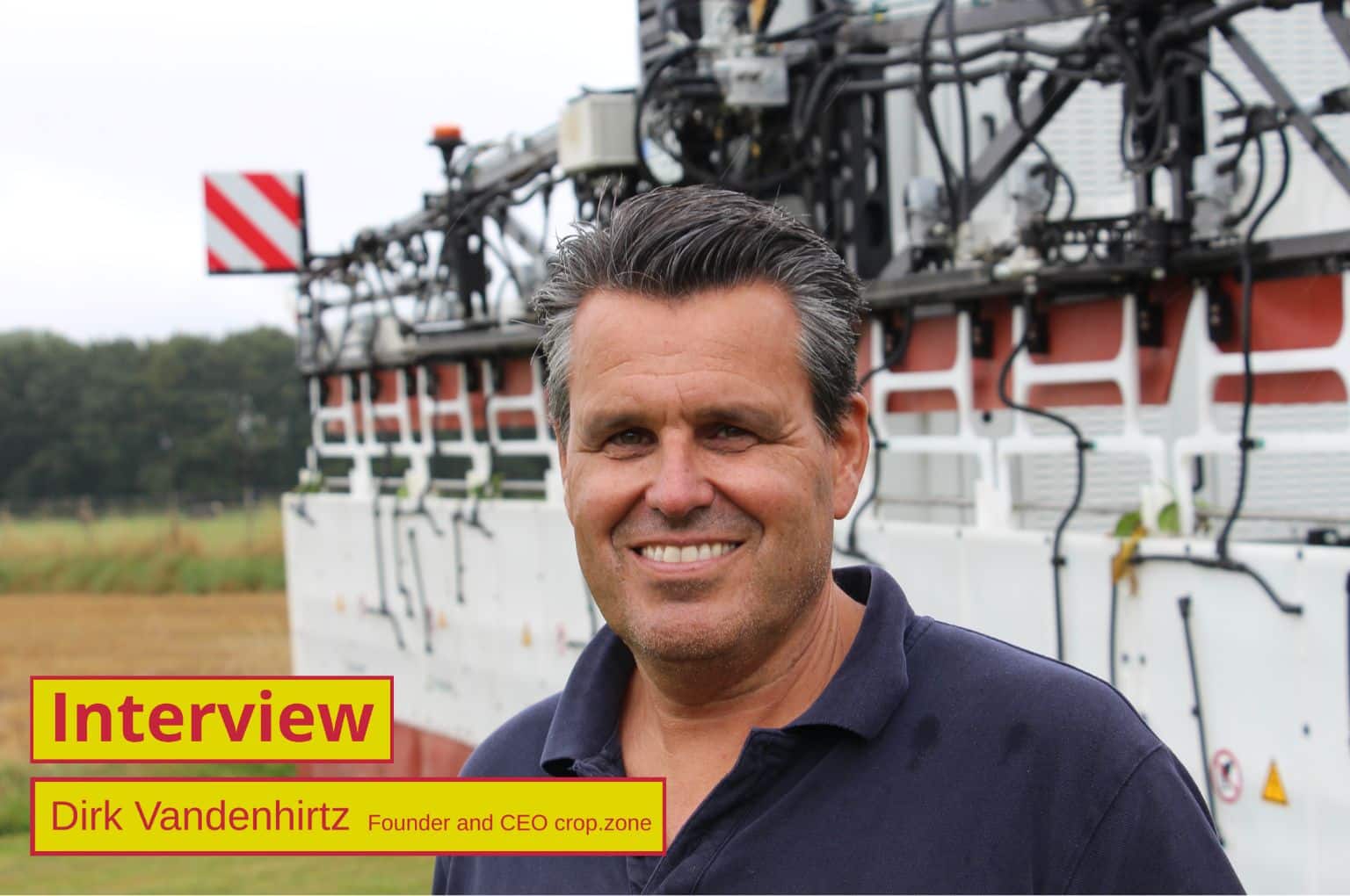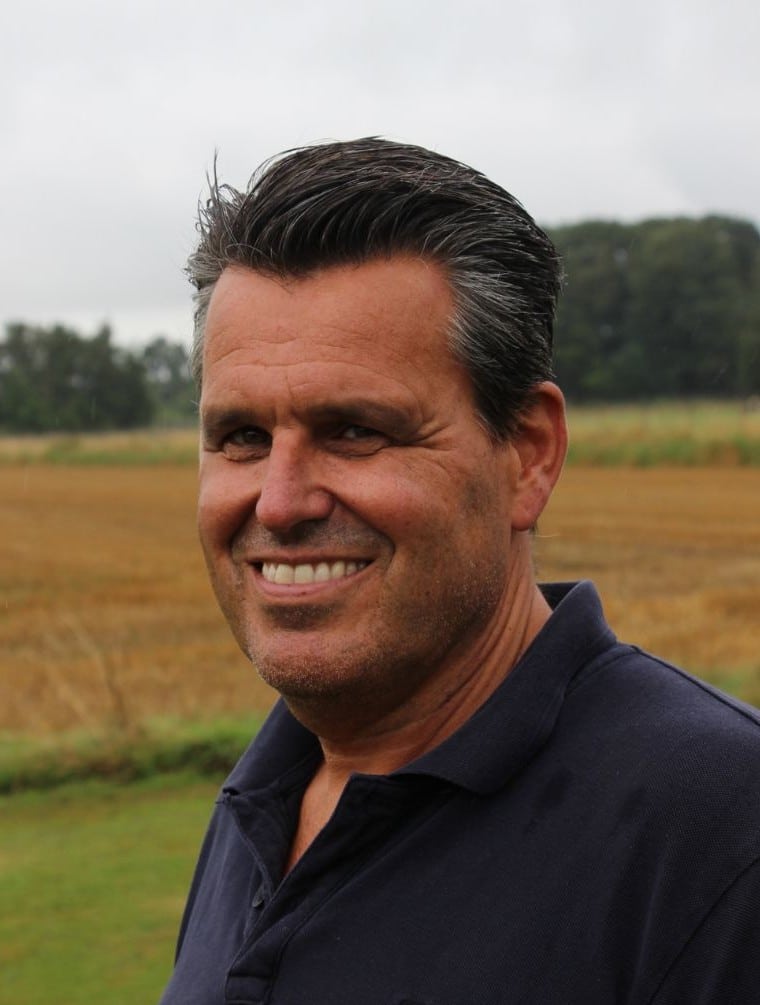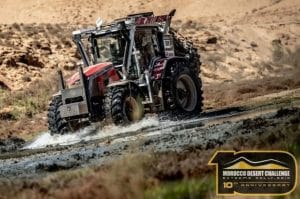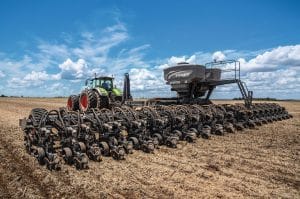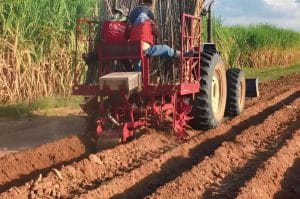Non selective weed control and desiccation of cover crop and potato haulm, has for decades mostly been done mechanically and/or with the use of herbicides. Various sustainable alternatives for chemical control have been developed ever since. Among which the crop.zone method, introduced by Dirk Vandenhirtz. “Electricity is our answer, making crop growing more sustainable”, he says.
“Chemical herbicide development started in the Fifties and real innovation stopped in the Nineties of the last century. Many are increasingly being banned worldwide due to their high toxicity to humans or the environment, and those that remain are proving less effective. This continues to further go down, as weeds are getting more resistant and produce major yield losses. That’s a global threat”, says Dirk Vandenhirtz.
Biologist Vandenhirtz from Germany developed the residue-free crop.zone technology five years ago. In simple terms, the specially developed volt.fuel contact liquid is sprayed onto the crop or field from a sprayer at the front of the tractor. The generator at the rear of the tractor delivers up to 5,500 volts and volt.apply applicators transfer the electrical energy to the plants. In the plants, the transport pathways for water and nutrients are destroyed. As a result, the plants are completely dried out.
Rapidly growing resistance
“There is a rapidly growing number of non-target site resistance (NTSR) weeds worldwide. The herbicides simply do not reach the growth centres of the plants, making them resistant to even very different types of chemical herbicides,” says Dirk Vandenhirtz. “In addition, the use of large amounts of chemicals in agriculture is no longer cost-effective or sustainable. Apart from the environmental impact, people underestimate the energy that goes into the production of herbicides. They don’t grow on trees, but require a lot of energy to produce. You need about 120 kWh per hectare to apply glyphosate, depending on where it comes from.”
“A major component of glyphosate is phosphorus, which is mined with massive environmental impact. Nearly one percent of global phosphorus mining goes into glyphosate production, which already contributes to unwanted phosphate loads in rivers. Given the very limited availability of phosphorus, this is simply not sustainable. And glyphosate entering the food chain, wildlife feed or already saturating some soils around the world is not a good idea either.
Given these facts, I was convinced that agriculture needed to use really innovative modes of action to control plants on a large scale. This led me to the idea of doing research to find something more sustainable, with less impact on the environment, and without increasing costs. This eventually led me to the idea of developing crop.zone”.
“Herbicides
don’t grow
on trees”
Non-selective application
“The majority of herbicides used worldwide are non-selective, such as glyphosate and the even more toxic ones” Dirk continues. “If you spray it, it will kill all the plants, unless you grow resistant GMO crops. But we don’t grow those in Europe, we use glyphosate for seedbed preparation and cover crop control. Why did we start with desiccation? Any desiccation is relatively close to harvest. This means you have a high risk of residues in the food system and you have longer waiting times before harvest. This costs growing-time and yield. For this reason, glyphosate-based desiccation is now banned in the EU and more and more major food processors want to remove it from their supply chain for reasons of legal risk and consumer acceptance. For potato desiccation, the even more toxic paraquat and diquat are now both banned in the EU due to their toxicity to humans. The remaining herbicides are less toxic than diquat, but legal waiting periods still cost growing time and yield. That’s why we started with desiccation.
“There are all types of innovative initiatives in the world of selective weed control: spot spraying, lasers, and robots. And that’s good! But there’s no more innovation in the non-selective world. It has to be fast, cheap and reliable. At crop.zone we build large systems for more hectares per hour, currently a 12m model and soon a 27m model. These run at 6-8 km/h and use only 10-30 kWh per hectare, compared to 120 kWh for chemical desiccation. This is a significant energy saving, both for the farmer and for society. Again, herbicides don’t grow on trees, they have to be produced and end up somewhere in the environment.
Who feeds the world beyond local production? That’s the Midwest of the US, Canada and Brazil, where farmers grow soy and corn. These highly productive systems are losing up to 15% of their yield to resistant weeds. If we don’t find a way to deal with resistant weeds, we won’t be able to feed the world. And it’s getting bigger every year. With global warming, it will only increase. “
Weed pressure down 95 percent
“Our application can help reduce resistant weed pressure by 95 percent. By simply applying our technology at the end of the cover crop growing cycle, the pre-planting stage. Resistant weed pressure is reduced by 95 percent.
In the highest-yielding areas, farmers grow two cycles. They grow corn, cover crop, soybean, cover crop and so on. The cover crop is what they grow between the cycles. We can show that when farmers use our technology, they reduce the pressure of resistant weeds by 95 percent. That means they can produce more and protect productive acres. Global warming is not going to stop. As a result, resistant weeds will continue to be a problem.
For Brazil, we’re developing a 40 meter working width machine, which is different from Europe. These are highly productive areas. In Europe, farmers only work 50-100 hectares and hire contractors. In Brazil, the US and Canada, many grow a few thousand hectares themselves.”
Longer growing season and higher yield
“Our machine is not cheap, an investment of around €250,000,” continues Dirk. “But the most important thing for the farmer is the payback period. We can show that the return on investment (ROI) will be 1 or 2 seasons. That’s for two reasons:
Firstly, farmers don’t have to buy expensive herbicides because our system works without herbicides. Secondly, they directly increase yields because of the longer growing season and less resistant weeds. And on top of that, in areas where increasing herbicide rates is no more a legal or agronomic option than returning to tillage, you can continue to work with high yields at all. So these three factors have a direct impact on the yield increase that you need to factor into your ROI. Based on real-time data, we have calculated that the ROI is in 1 or 2 seasons. You don’t have to explain that to farmers. You don’t have to educate them that they can get rid of resistant weeds or other invasive species with our technology. They are farmers and they know that data.
We’re a European company, but we think globally. Important agricultural countries are the US, Canada and Brazil. That’s where you have to go. Although Europe is our core market, our future development will be focused on the US and Canada. Ultimately, we all have to think about minimizing the use of chemicals in agriculture. I like the technology of innovative companies that are developing smart spot spraying systems. They are doing good work, but it is still based on the use of chemical herbicides. And if efficiency continues to decline or herbicides are simply banned because of toxicity, it will not help. It helps now as a transitional technology, but not in 10 years’ time. Then we will need the new active principles without chemical herbicides.”
Safe system
“If you’re going to kill the plant, you have to make sure it reaches the roots, otherwise it won’t help. Our volt.fuel and electric desiccation technology doesn’t affect soil organisms. We have zero impact on soil organisms. This has been independently tested and there’s no evidence of any negative impact on soil organisms. In fact, as long as we are replacing other technologies that use soil movement and chemical residues, we are actually saving soil life.
It’s also safe for children and bystanders. We have achieved the highest level of safety that can be achieved in Europe. There’s no evidence that it will harm anyone. Of course, accidents can still happen, just like on the roads, but it’s not our technology that causes them. “
Skilled dealer network
“At the moment we have a dealer network in Europe that covers about 85% of the arable land in the EU. There are now 35 of our systems in operation, mainly in Europe. And this year we will deploy another 15 units that are already in production. The first 4 systems will go to Canada, it’s a fast growing market. Farmers in Canada are “techative”, keen to use new technology. We now have the first 3 dealers in Canada. They are the gatekeepers to service. We cannot service machines in Canada remotely from our facilities in Aachen, Germany.
We are also trying this in Brazil, but first we need a strong partner there with knowledge and good service support. Brazil has a high import rate for agricultural machinery. So our high-tech, expensive machines need to be up and running all the time, with local service available in the event of a breakdown. Good dealer support with qualified local engineers is essential!
We continue to develop and promote our system to a professional audience. This will start with our farm.zone field day on 25 June in Aldenhoven, Germany. And, of course, we will be exhibiting our technology at the international Agritechnica show in Hanover, Germany, next November”, concludes Dirk Vandenhirtz. “Come and see how crop.zone technology works like chemistry, but without chemistry!”

![RightSpot Ad Template Digital-1400×190-px[76] Ag Leader RightSpot](https://world-agritech.com/wp-content/uploads/elementor/thumbs/RightSpot-Ad-Template-Digital-1400x190-px76-r316mmc0hgoob9qxmklllnnbxta1nlj7t2vjkoyeek.png)

